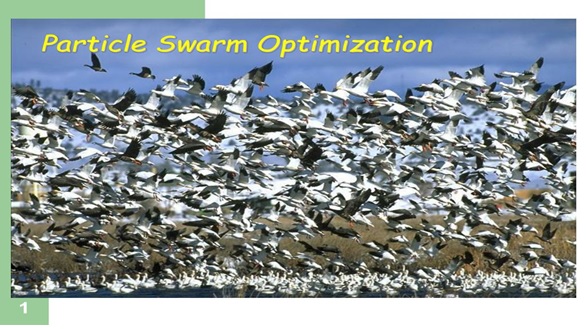
Home » PARTICLE SWARM OPTIMIZATION AND IT’S APPLICATIONS

PSO algorithm is the swarm-based intelligence algorithm. It is a modern optimization evolutionary technique inspired by the social behavior of flock of birds. Being it’s Origin in 1995, time to time several modifications of PSO have been developed with many application areas. PSO is widely used in many fields because it is very easy to implement, and give the result after each iteration. After each iteration, it gives the two best values Pbest and Gbest. 1st value is related to the cognitive part, and 2ndvalue is related to the social part of the PSO algorithm.
PSO technique mimics the behavior of birds that do not have any leader in their group of swarm. Every particle in the PSO algorithm can communicate to the other particles. They can take every information about the food source to the other particles and from previous experience also. This process shall be repeated several times till the best optimal point is obtained. The whole process of PSO depends on two main parameters Inertia weight and two acceleration factors.
The role of inertia weight is considered most important in PSO. Therefore, a proper control of inertia weight is considered very important to find the optimum solution. Shi and Eberhart made an improvement in the convergence of the PSO with a linearly varying inertia weights over the iterations. There are many optimization areas where we can use this algorithm. Some of them are:
PSO is an evolutionary computational technique for updating velocity and position which is defined as:
Priyavada
Assistant Professor (SOBAS)
Department of Mathematics
August 8, 2023RECENT POSTS
CATEGORIES
TAGS
Agriculture Agriculture future AI Architecture artificial intelligence Bachelor of Commerce BA English BA Psychology BTech AIML BTech CSE BTech cybersecurity BTech Engineering Business management career Career-Specific Education career guide career option career scope Civil engineering commerce and management Computer Science Computer science engineering Data science degree education Engineering Engineering students English Literature english program Fashion Design Fashion design course Higher Education Journalism journalism and mass communication law Law career Machine Learning mathematics MBA MBA specialization Mechanical Engineering Pharmacy Psychology Research and Development students
Nachauli, Jasana Road, Faridabad, Haryana
Address: C-72, Second Floor, Shivalik, Near Malviya Nagar,
Above HDFC Bank, New Delhi 110017
Landline No. - 011-46570515 / 45138169 / 41755703
Mobile No. - +91-7303152412 / +91-7303152420 / +91-9311321952
Toll Free: 1800-120-4613
Mobile : 8447744303 | 8447744304 | 8447744306 | 8447744309
8700003974 | 8700003411 | 8700003749
Copyrights © 1998 - 2025 Lingaya's Vidyapeeth (Deemed To Be University). All rights reserved.
LV only conducts physical/online verification of any document related to examination on the following email id:
It is important to note that the following email IDs and domains are fraudulent and do not belong to our university.